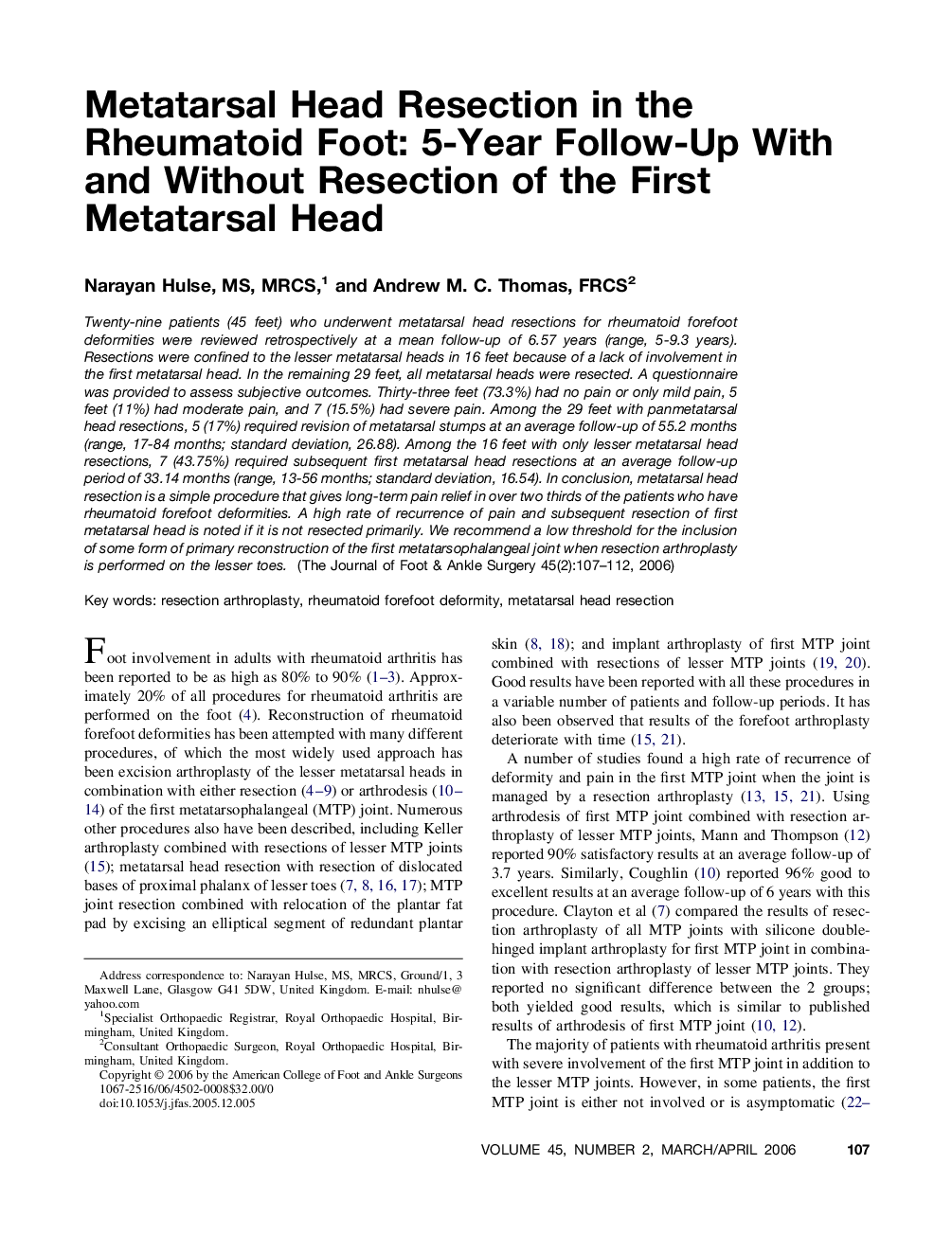| Article ID | Journal | Published Year | Pages | File Type |
|---|---|---|---|---|
| 2717314 | The Journal of Foot and Ankle Surgery | 2006 | 6 Pages |
Twenty-nine patients (45 feet) who underwent metatarsal head resections for rheumatoid forefoot deformities were reviewed retrospectively at a mean follow-up of 6.57 years (range, 5-9.3 years). Resections were confined to the lesser metatarsal heads in 16 feet because of a lack of involvement in the first metatarsal head. In the remaining 29 feet, all metatarsal heads were resected. A questionnaire was provided to assess subjective outcomes. Thirty-three feet (73.3%) had no pain or only mild pain, 5 feet (11%) had moderate pain, and 7 (15.5%) had severe pain. Among the 29 feet with panmetatarsal head resections, 5 (17%) required revision of metatarsal stumps at an average follow-up of 55.2 months (range, 17-84 months; standard deviation, 26.88). Among the 16 feet with only lesser metatarsal head resections, 7 (43.75%) required subsequent first metatarsal head resections at an average follow-up period of 33.14 months (range, 13-56 months; standard deviation, 16.54). In conclusion, metatarsal head resection is a simple procedure that gives long-term pain relief in over two thirds of the patients who have rheumatoid forefoot deformities. A high rate of recurrence of pain and subsequent resection of first metatarsal head is noted if it is not resected primarily. We recommend a low threshold for the inclusion of some form of primary reconstruction of the first metatarsophalangeal joint when resection arthroplasty is performed on the lesser toes.
